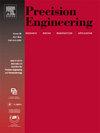Surface quality and formation mechanism of Ti-6Al-4V by in-situ laser-assisted ball-burnishing
IF 3.5
2区 工程技术
Q2 ENGINEERING, MANUFACTURING
Precision Engineering-Journal of the International Societies for Precision Engineering and Nanotechnology
Pub Date : 2025-04-09
DOI:10.1016/j.precisioneng.2025.04.006
引用次数: 0
Abstract
Titanium alloys are widely used in aerospace, rail transportation, and other fields. As components operating in complex environments, high surface finish and excellent fatigue resistance are required. Ball-burnishing is one of the common techniques for surface strengthening of workpieces. However, when dealing with high-strength, low-plasticity materials, ball-burnishing faces issues such as poor surface quality, inadequate strengthening effects, and severe tool wear. Therefore, this study proposes an in-situ laser-assisted ball-burnishing (In-LAB) technology. Unlike the laser pre-assisted ball-burnishing, in this technology, the laser beam is directed to the workpiece machined area by passing through the transparent diamond ball-burnishing tool. The heating and burnishing effects act simultaneously on the workpiece, efficiently utilizing the laser energy and avoiding unnecessary thermal damage. This study has established a finite element model (FEM) for In-LAB and found that, compared to normal ball-burnishing, the maximum residual compressive stress in the workpiece surface increased by 131 %. Through a Taguchi experiment with the objective of minimizing surface roughness, the relevant parameters are: rotation speed 300 r/min, press amount 0.05 mm, feed rate 0.05 mm/r, and laser power 25 W. Compared to normal ball-burnishing, the surface roughness decreased by 51 %, the surface hardness increased by 7.5 %, and tool wear was significantly reduced. This technology combines in-situ laser-assisted machining with ball-burnishing technology. Related research results indicate that it can provide lower surface roughness, higher residual compressive stress, and greater surface hardness. In-LAB technology offers a new approach for surface finishing and strengthening of hard-to-machine materials, expanding the application scope of In-LAM technology.
原位激光辅助球磨Ti-6Al-4V表面质量及形成机理
钛合金广泛应用于航空航天、轨道交通等领域。作为在复杂环境中工作的部件,需要高表面光洁度和优异的抗疲劳性。球磨是工件表面强化的常用技术之一。然而,在处理高强度、低塑性材料时,球磨面临着表面质量差、强化效果不理想、刀具磨损严重等问题。因此,本研究提出了原位激光辅助球抛光(In-LAB)技术。与激光预辅助球抛光不同的是,在这种技术中,激光束通过透明的金刚石球抛光工具被引导到工件加工区域。加热和抛光效果同时作用于工件,有效地利用激光能量,避免不必要的热损伤。本研究建立了in - lab的有限元模型(FEM),发现与普通球磨相比,工件表面的最大残余压应力增加了131%。以表面粗糙度最小为目标进行田口实验,实验参数为:转速300 r/min,压入量0.05 mm,进给速度0.05 mm/r,激光功率25 W。与普通球磨相比,表面粗糙度降低了51%,表面硬度提高了7.5%,刀具磨损明显降低。该技术结合了原位激光辅助加工和球抛光技术。相关研究结果表明,它可以提供较低的表面粗糙度、较高的残余压应力和较高的表面硬度。In-LAB技术为难加工材料的表面处理和强化提供了新的途径,扩大了In-LAM技术的应用范围。
本文章由计算机程序翻译,如有差异,请以英文原文为准。
求助全文
约1分钟内获得全文
求助全文
来源期刊
CiteScore
7.40
自引率
5.60%
发文量
177
审稿时长
46 days
期刊介绍:
Precision Engineering - Journal of the International Societies for Precision Engineering and Nanotechnology is devoted to the multidisciplinary study and practice of high accuracy engineering, metrology, and manufacturing. The journal takes an integrated approach to all subjects related to research, design, manufacture, performance validation, and application of high precision machines, instruments, and components, including fundamental and applied research and development in manufacturing processes, fabrication technology, and advanced measurement science. The scope includes precision-engineered systems and supporting metrology over the full range of length scales, from atom-based nanotechnology and advanced lithographic technology to large-scale systems, including optical and radio telescopes and macrometrology.

 求助内容:
求助内容: 应助结果提醒方式:
应助结果提醒方式:


